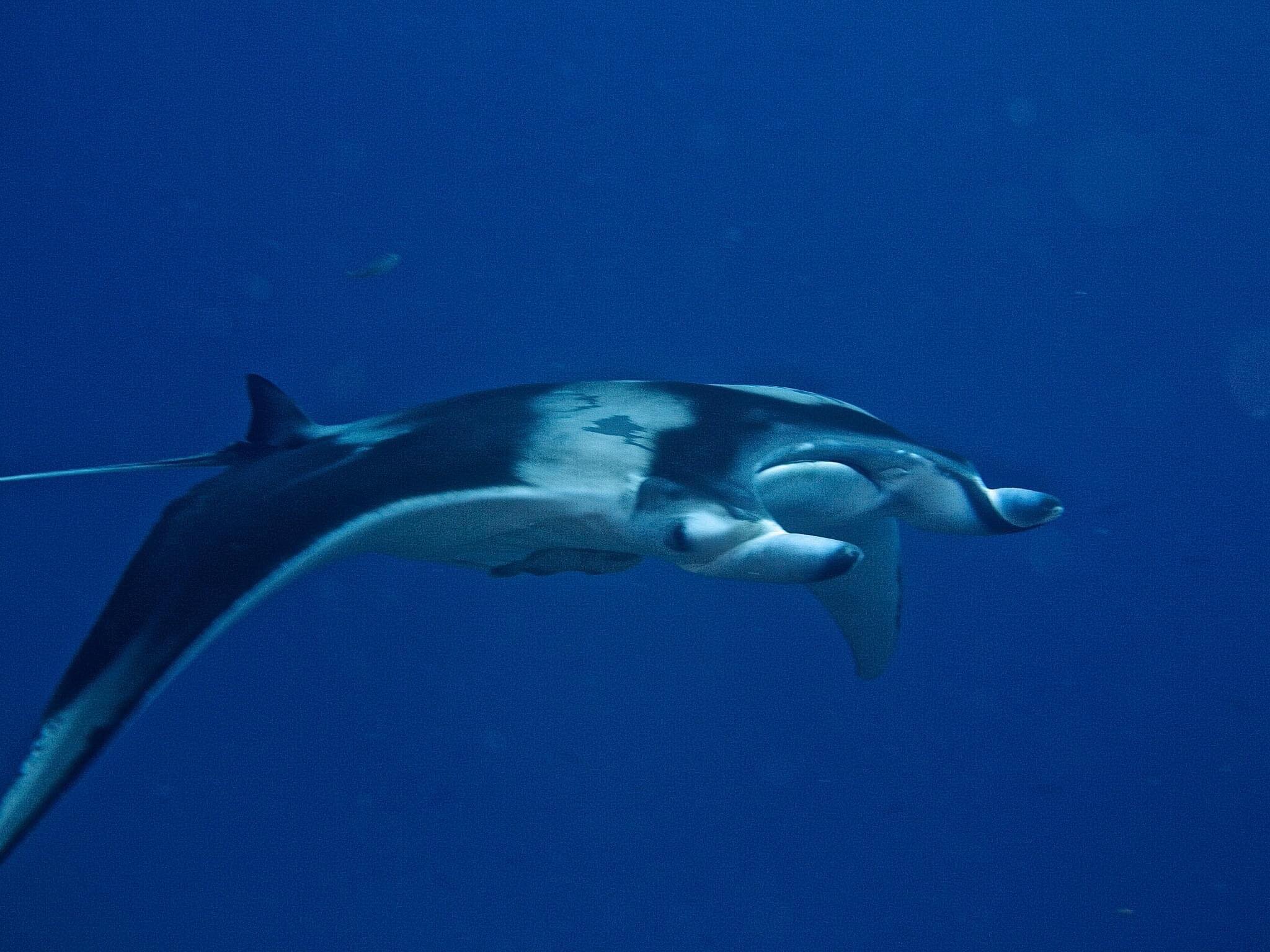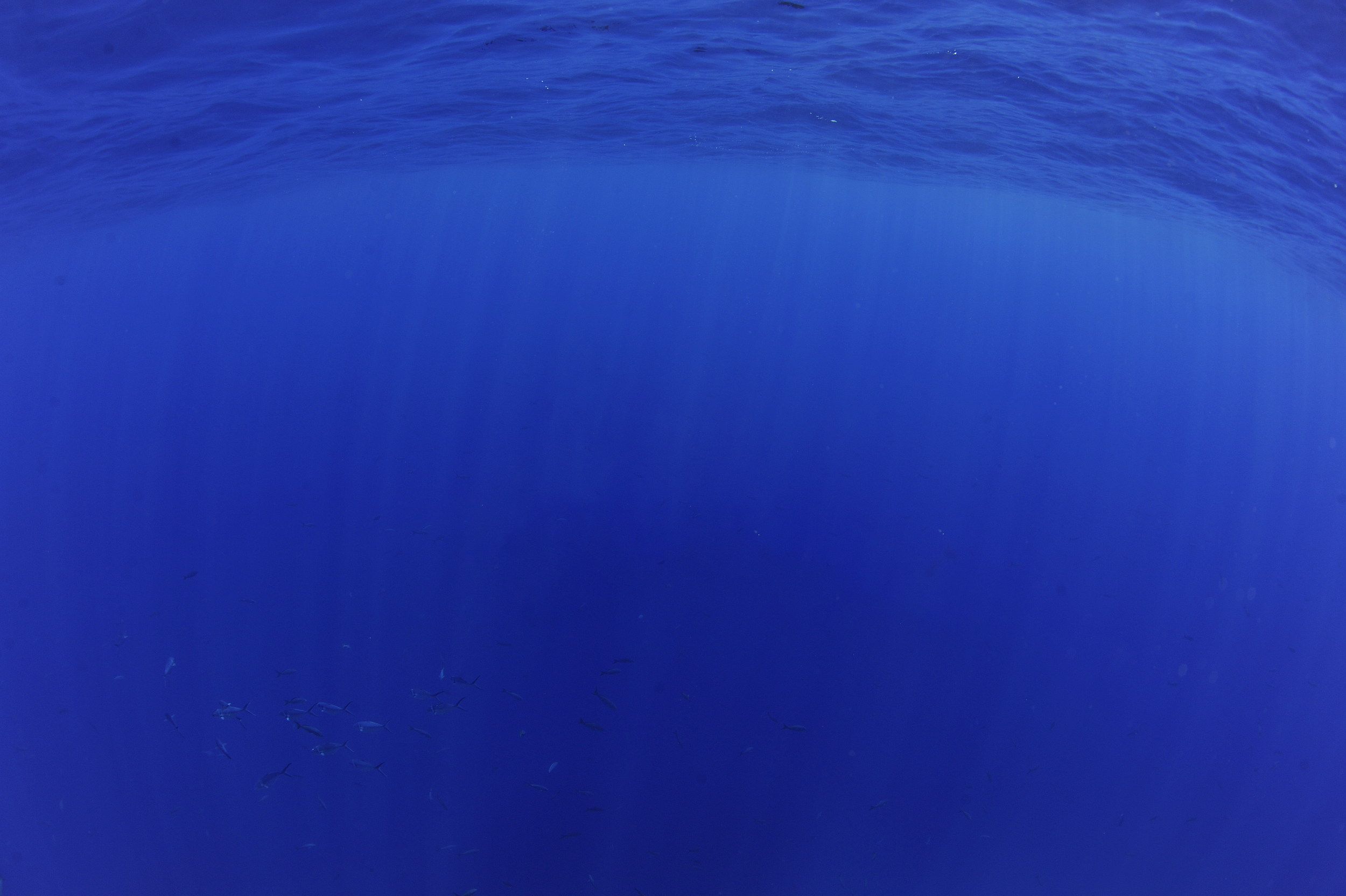
PROJECT OVERVIEW
Caribbean Manta Sighting from Bonaire. © Mary Ann Rosenburg
Covering an area of more than a million square miles, the Caribbean Sea is one of the world's largest seas. The region is defined by more than 700 islands, reefs and cays within three island chains (the Greater Antilles, Lesser Antilles and the Leeward Antilles), the Lucayan Archipelago (Bahamas and Turks and Caicos) and islands off the coast of mainland Central and South American nations (including Honduras, Panama, Colombia and Venezuela). While manta ray aggregation sites have been identified and researched in areas near the Caribbean (Florida, Texas, Gulf of Mexico, Mexican Caribbean, Brazil), research on manta rays across the greater Caribbean region has remained limited.
Oceanic manta sighting from Aruba. © Danielle De Kool
Throughout the Caribbean, diving and snorkeling are popular tourist activities, and the Manta Trust has received numerous photos from citizen scientists who have encountered manta rays in the region. Additional information from fishermen, researchers, and local community members has allowed us to confirm five species' presence across the region. These include Mobula birostris (oceanic manta rays), Mobula c.f. birostris (putative, yet undescribed species of manta ray recognized in the Caribbean), Mobula tarapacana (Sicklefin Devil Ray), Mobula thurstoni (Bentfin Devil Ray), Mobula hypostoma (West Atlantic Pygmy Devil Ray) and Mobula mobular (Spinetail Devil Ray).
Based on the data available so far, sightings appear to be infrequent and unpredictable however with additional research, it may be possible to identify environmental drivers of sightings and key habitat areas. Further researching the species present and the threats they face regionally will enable us to make recommendations for conservation measures. With such a large habitat area, collaboration with local stakeholders, citizen scientists, fishermen, and government organizations will be essential to this conservation program's success.
PROJECT GOAL
To better understand the biology and ecology of mobulids (manta and devil rays) throughout the islands of the Caribbean Sea as a means to drive effective conservation measures for these endangered species and the habitats they utilize.
Main Objectives
To achieve our goal, the Caribbean Islands Manta Project aims to meet the following objectives by collaborating with local community organizations, businesses, governments, and other stakeholders in the region.
(1) Assess mobulid species distribution, abundance, and population demographics throughout the region;
(2) Identify key mobulid ray aggregation sites and analyze the influence of seasonal and environmental factors on sightings.
(3) Investigate mobulid ray migratory corridors and population inter-connectivity between island nations in the region.
(4) Identify threats to mobulids in the region and work to mitigate these threats through evidence-based recommendations to policymakers and education initiatives.
(5) Increase awareness of mobulids and the importance of conservation and research in the region.

Project Leader - NICOLE PELLETIER
Growing up in Rhode Island, Nicole has always had a passion for the ocean and the marine environment. She learned to dive at an early age off the Rhode Island coastline and dreamt of studying marine biology. After completing degrees at the University of Rhode Island and Ohio University, she spent time traveling and trained as a dive instructor, later working in this capacity with conservation organizations in the Philippines, Mexico and the US Virgin Islands. In 2016, she was offered the chance to work in the Maldives as a marine biologist.
After a year in the Maldives, Nicole moved to the UK to pursue a master’s degree in Marine Environmental Management at the University of York (UK). She wrote her dissertation on the behaviour and social interactions of reef manta rays by analysing videos recorded by the Manta Trust team using Crittercams and completed field research with the Maldivian Manta Ray Project (MMRP), collecting video footage to test the effectiveness of the diving code of conduct.
After graduating from York, Nicole joined the MMRP team as Project Manager for Laamu Atoll, where she led research projects, guest activities and community education initiatives. She returned to the US in 2020 and began analysing Caribbean citizen science that had been submitted to the Manta Trust. With more than 500 records now collected, Nicole is looking forward to growing a Caribbean Islands Manta Conservation Program in the years to come.

Key Achievements
Established a database of manta and devil ray encounters for the Caribbean Islands region
Collected 500+ reports of species from citizen scientists
Confirmed the presence of mobulid species around 20+ island nations








